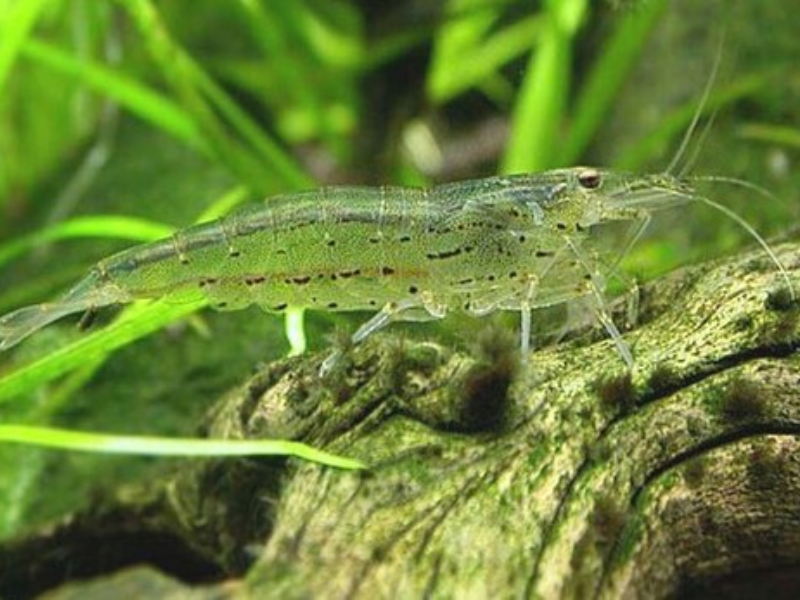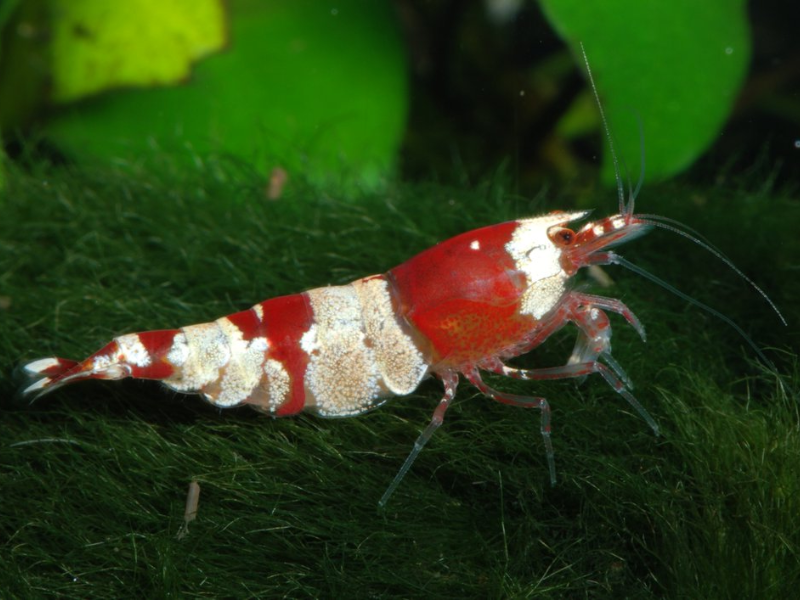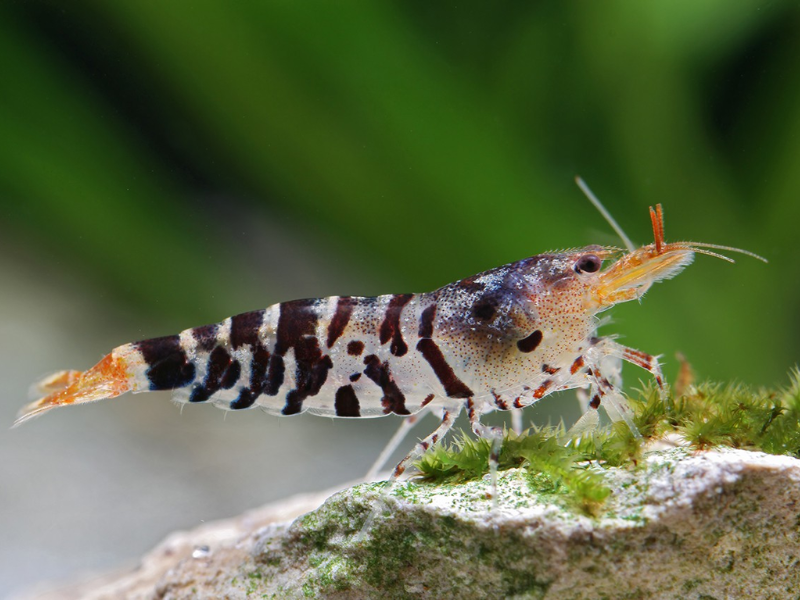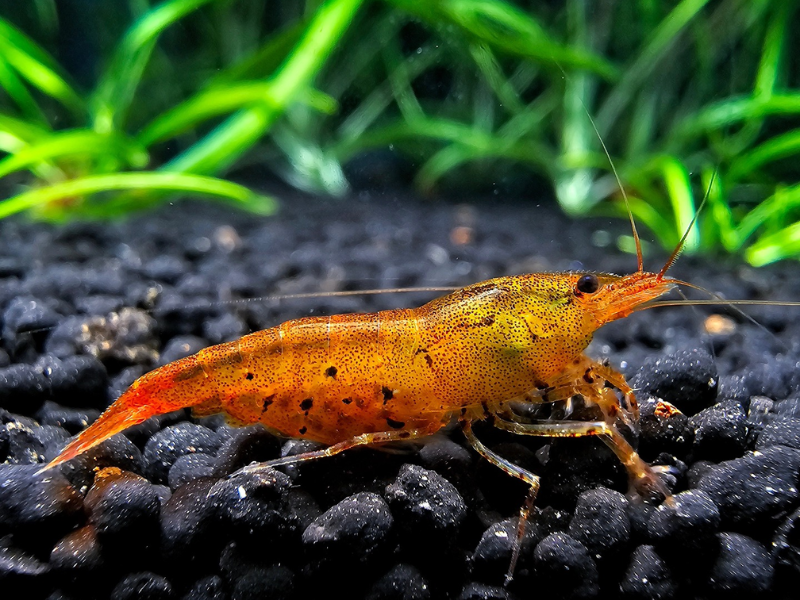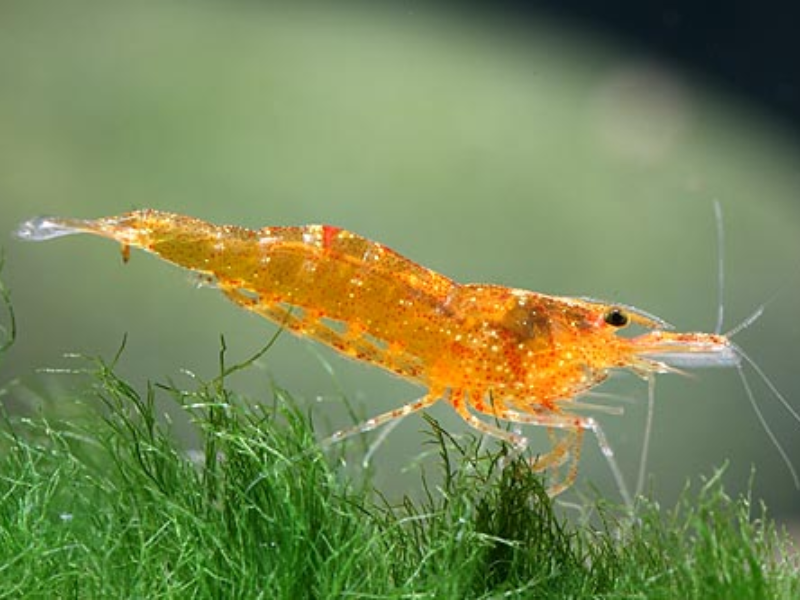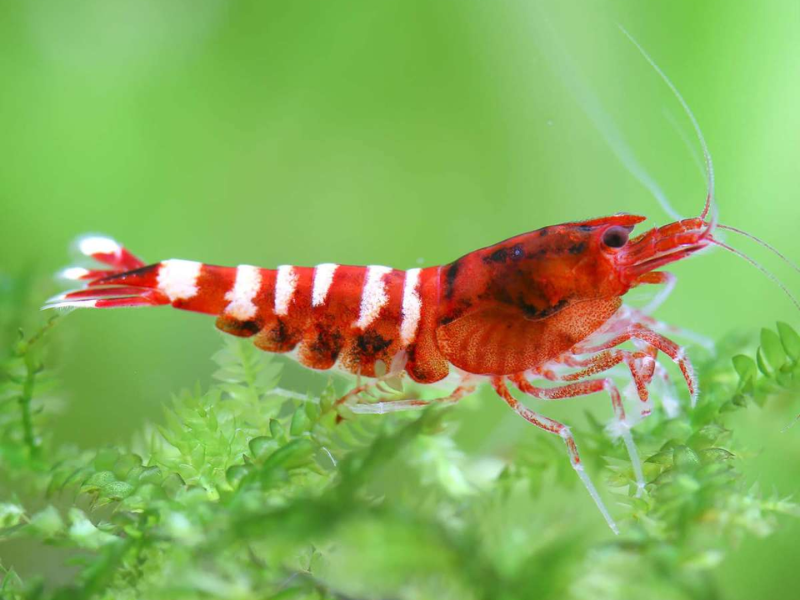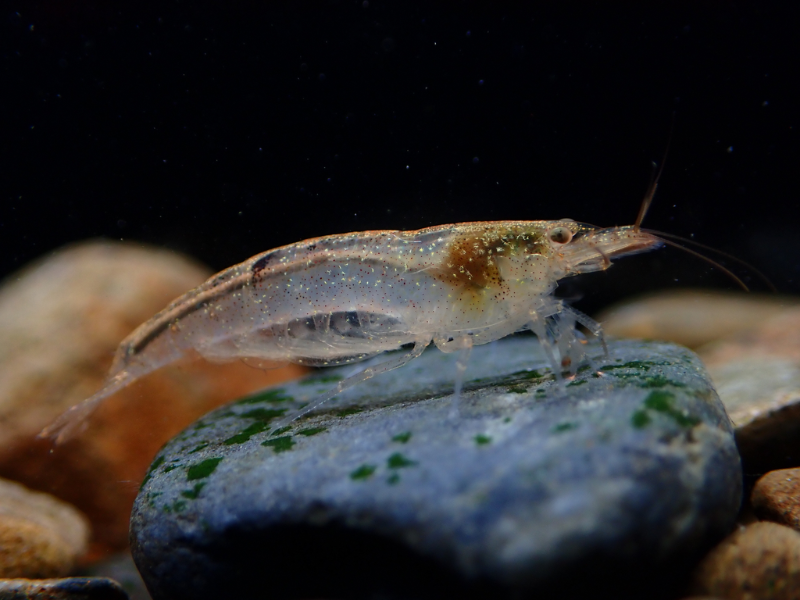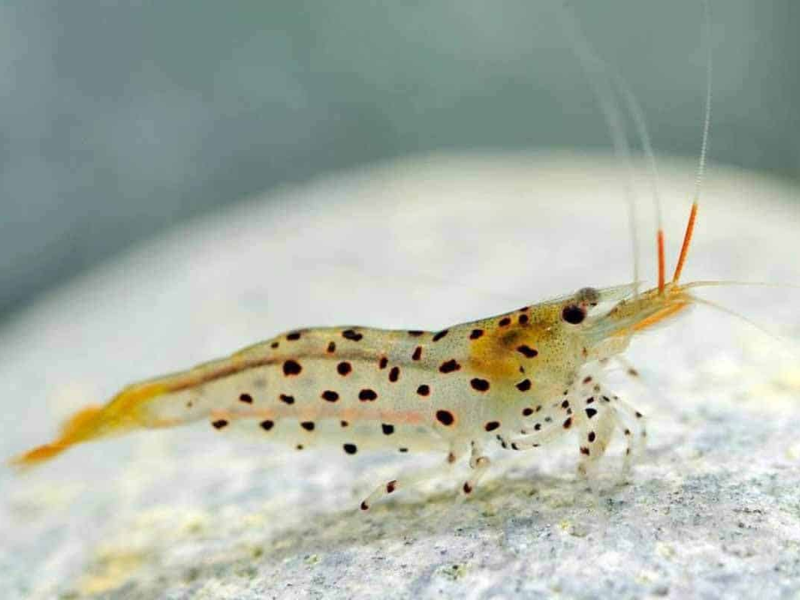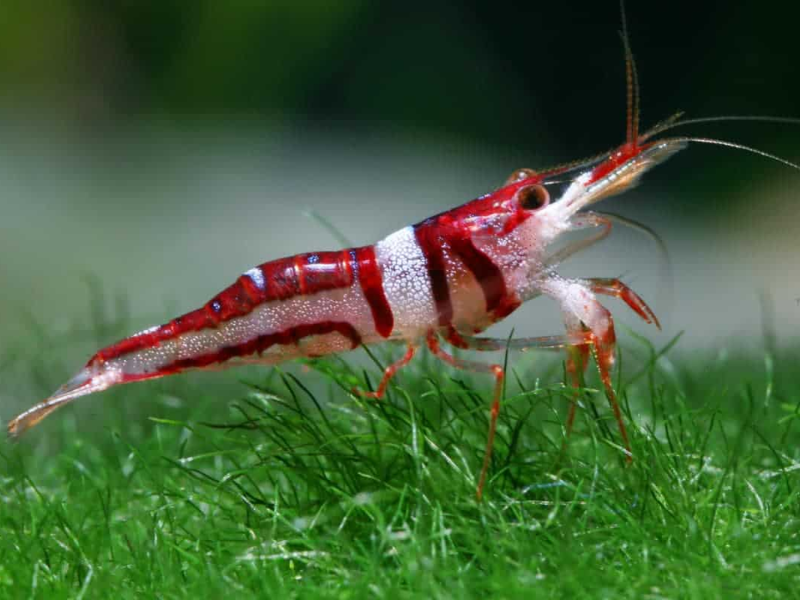Caridina babaulti
Babaulti Shrimp
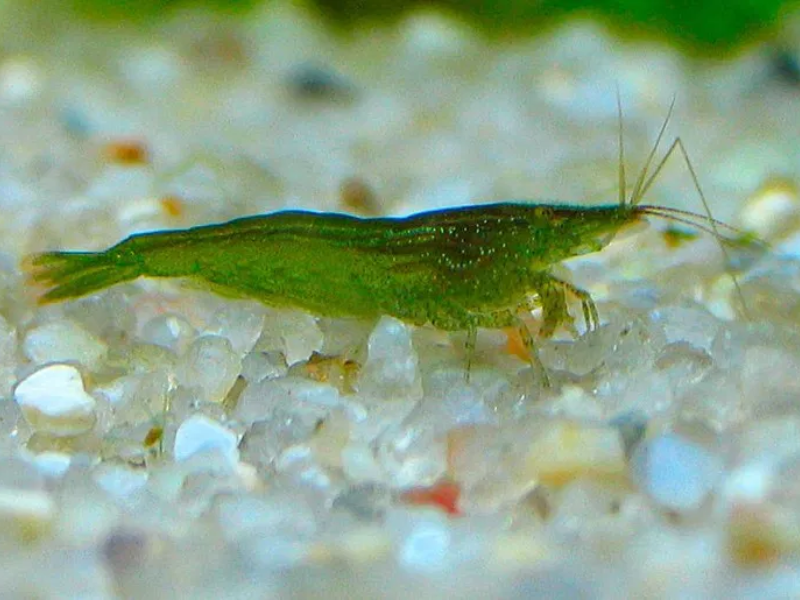
Wissenschaftliche Klassifizierung
Schnellstatistiken
Aquarienbau-Informationen
Über diese Art
Dieser Inhalt ist derzeit nur auf Englisch verfügbar. Übersetzungen in andere Sprachen folgen in Kürze.
Grundbeschreibung
The Babaulti Shrimp is a colorful and active little cleaner for your freshwater aquarium. Known for its variations like the vibrant Green Babaulti or the patterned Zebra Babaulti, this shrimp adds a splash of life to the bottom and middle levels of your tank. They are considered a bit more challenging than common Cherry Shrimp, making them a great choice for someone with a little aquarium experience who wants to try something new.
These shrimp are natural scavengers and spend their day picking at plants, decorations, and the substrate, helping to keep your tank tidy by eating algae and leftover food. They are peaceful and very small, so they must be kept with other gentle, small tank mates like nano fish or other dwarf shrimp. Anything with a big mouth might see them as a snack! For them to feel safe and active, they need to be in a group, so plan on getting at least six. They thrive in a heated aquarium with stable water conditions and gentle filtration. A well-planted tank with plenty of hiding spots will make them feel right at home, encouraging them to show off their best colors and behaviors. Feeding is simple; they will graze constantly but appreciate a daily offering of specialized shrimp food or a blanched vegetable.
Detaillierte Beschreibung
Caridina babaulti is a fascinating dwarf shrimp from India, prized in the aquarium hobby for its diverse color morphs and engaging behavior. Unlike the more common Neocaridina species, Babaultis present a moderate keeping difficulty, primarily due to their need for stable water parameters. Sudden fluctuations in pH, hardness, or temperature can induce stress, leading to failed molts. Therefore, a mature, cycled aquarium is a prerequisite for their introduction. They thrive in low-flow environments, making sponge filters or filters with baffled outflows an ideal choice, as this mimics the slower-moving waters of their native habitat. The tank should be well-established with plenty of surfaces for biofilm to grow, as this is a primary component of their diet.
Socially, these are shoaling animals that require the company of their own kind to feel secure. A small group will often hide, but a larger colony will display more confident and natural foraging behaviors across all available surfaces. Their constant grazing on algae and detritus makes them a valuable part of an aquarium's cleanup crew. Their omnivorous diet should be supplemented with a variety of foods. A high-quality sinking pellet designed for crustaceans should be a staple, complemented by natural foods like Indian almond leaves (which also release beneficial tannins), blanched vegetables such as spinach and zucchini, and commercially available powdered foods, especially for tanks with shrimplets.
Breeding Caridina babaulti is a rewarding experience. They have a direct breeding cycle, meaning the females carry the eggs until they hatch into miniature, fully-formed versions of the adults, forgoing a complex larval stage. This makes raising the young more straightforward than with some other Atyidae shrimp. However, triggering breeding and ensuring fry survival requires pristine water conditions, a secure environment with ample hiding places like mosses, and sufficient microfauna for the young to feed on. Their moderate breeding rate means they will not overpopulate a tank as rapidly as some other shrimp species. Their slender, laterally compressed body shape allows them to navigate dense aquatic vegetation with ease, making them a perfect inhabitant for heavily planted aquascapes.
Wissenschaftliche Beschreibung
Caridina babaulti is a freshwater decapod crustacean belonging to the family Atyidae, originating from river systems in India. Its classification as 'Least Concern' on the IUCN Red List suggests a widespread and stable wild population. The species exhibits notable intraspecific polymorphism, resulting in several distinct color morphs, such as the 'Green' and 'Zebra' varieties, which are selectively bred in the ornamental trade.
Physiologically, C. babaulti is characterized by a low metabolic rate, very low oxygen consumption, and minimal waste production, indicated by its low bioload factor (0.3). These traits are adaptations to its natural habitat, likely slower-moving, densely vegetated waters rich in detritus. This efficient metabolism allows it to subsist primarily as a detritivore and micro-predator, consuming biofilm, algae, and decaying organic matter. Its constant foraging is a key ecological function, contributing to nutrient cycling within its ecosystem. The compressiform body shape is an evolutionary adaptation for maneuvering through complex benthic and epiphytic structures.
Reproduction in Caridina babaulti is characterized by direct development, a significant departure from the more complex reproductive strategies of other Atyidae that involve a planktonic larval stage. The female broods a clutch of eggs that hatch into fully formed, benthic juveniles. This mode of reproduction simplifies captive breeding protocols. However, successful propagation is contingent upon maintaining stable water chemistry within the species' tolerance range (pH 6.5-8.0; GH 70-150 ppm). Stress induced by parameter instability is a primary cause of mortality, particularly during the critical ecdysis (molting) process. While adaptable to a broader pH and hardness range than many specialized acidophilic Caridina species (e.g., C. cantonensis), its 'medium' difficulty rating in aquaculture stems from this sensitivity to environmental fluctuation rather than narrow parameter requirements. Its shoaling behavior is a typical anti-predator defense mechanism, and social density is a known factor in reducing stress and promoting natural behaviors in a captive setting.
